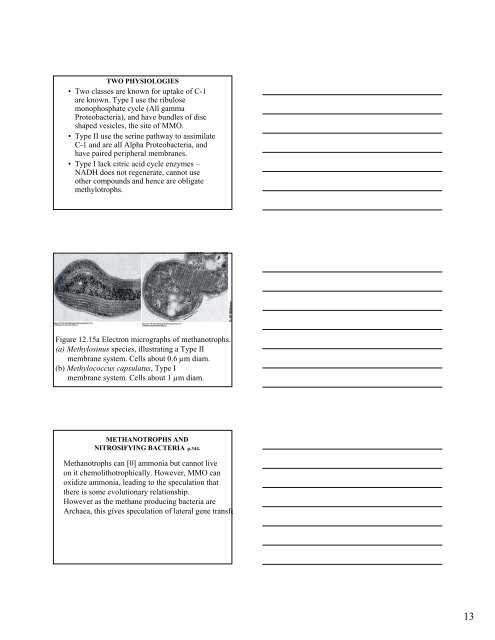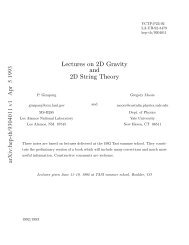Brock Biology of Microorganisms
Brock Biology of Microorganisms
Brock Biology of Microorganisms
Create successful ePaper yourself
Turn your PDF publications into a flip-book with our unique Google optimized e-Paper software.
TWO PHYSIOLOGIES<br />
• Two classes are known for uptake <strong>of</strong> C-1<br />
are known. Type I use the ribulose<br />
monophosphate cycle (All gamma<br />
Proteobacteria), and have bundles <strong>of</strong> disc<br />
shaped vesicles, the site <strong>of</strong> MMO.<br />
• Type II use the serine pathway to assimilate<br />
C-1 and are all Alpha Proteobacteria, and<br />
have paired peripheral membranes.<br />
• Type I lack citric acid cycle enzymes –<br />
NADH does not regenerate, cannot use<br />
other compounds and hence are obligate<br />
methylotrophs.<br />
Figure 12.15a Electron micrographs <strong>of</strong> methanotrophs.<br />
(a) Methylosinus species, illustrating a Type II<br />
membrane system. Cells about 0.6 µm diam.<br />
(b) Methylococcus capsulatus, Type I<br />
membrane system. Cells about 1 µm diam.<br />
METHANOTROPHS AND<br />
NITROSIFYING BACTERIA p.344.<br />
Methanotrophs can [0] ammonia but cannot live<br />
on it chemolithotrophically. However, MMO can<br />
oxidize ammonia, leading to the speculation that<br />
there is some evolutionary relationship.<br />
However as the methane producing bacteria are<br />
Archaea, this gives speculation <strong>of</strong> lateral gene transfe<br />
13
















